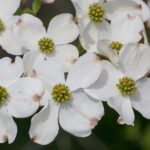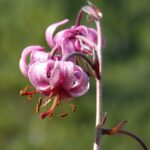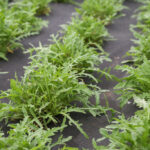Diseases and pests of the tulip

While tulips are generally robust and resilient plants, they are not immune to the challenges posed by various diseases and pests. A thriving bed of colorful tulips can quickly be marred by the onset of a fungal infection or an infestation of hungry critters. Being able to identify the common threats to your tulips and knowing how to prevent or manage them is a crucial aspect of successful cultivation. Proactive measures, such as ensuring good garden hygiene and providing optimal growing conditions, are your first line of defense. This article will provide a detailed overview of the most common diseases and pests that affect tulips, offering practical advice on how to protect your prized spring blooms from these potential problems.
One of the most destructive diseases to affect tulips is known as Tulip Fire, caused by the fungus Botrytis tulipae. This disease can infect all parts of the plant and cause a range of symptoms. On the leaves, it appears as small, yellowish, water-soaked spots that enlarge and turn brown or grey, often with a darker border. The leaves and stems can become twisted and distorted, and in severe cases, the entire plant may collapse as if it has been scorched by fire, hence the name. The flowers are also affected, showing discolored spots or flecks and papery, brown lesions on the petals.
The fungus that causes Tulip Fire thrives in cool, damp conditions, which are common during the spring when tulips are actively growing. The disease often overwinters in the soil on infected plant debris or on the bulbs themselves. Prevention is the most effective strategy. Always start with high-quality, certified disease-free bulbs. Ensure you plant your tulips in a location with good air circulation and avoid overcrowding them. Water the plants at the base, near the soil level, to keep the foliage as dry as possible, as wet leaves provide an ideal environment for fungal spores to germinate.
If you do spot the signs of Tulip Fire in your garden, it is critical to act quickly to prevent its spread. Immediately remove and destroy any infected plants or plant parts. Do not place this material in your compost bin, as the fungal spores can survive and re-infect your garden later. In the autumn, be meticulous about cleaning up all plant debris from the tulip bed. If you have had a severe infection, it is advisable to rotate your tulip planting to a different location for a few years, as the fungal spores can persist in the soil.
For gardeners who have experienced persistent problems with Tulip Fire, fungicides can be used as a preventative measure. These should be applied according to the manufacturer’s instructions, typically starting when the new shoots are just a few inches tall and continuing at regular intervals, especially during periods of wet weather. However, for most home gardeners, practicing good sanitation and cultural controls is usually sufficient to keep this disease in check and protect the health and beauty of their tulip display.
More articles on this topic
Common pests of tulips
Tulips have several adversaries in the animal kingdom, with rodents being among the most damaging. Voles, squirrels, chipmunks, and mice can all be attracted to tulip bulbs, viewing them as a tasty and nutritious food source. Voles, which are small, mouse-like rodents, tunnel underground and can devour entire plantings of bulbs from below without you even realizing there is a problem until the plants fail to emerge in the spring. Squirrels and chipmunks, on the other hand, will dig up newly planted bulbs in the autumn or emerging plants in the spring.
There are several strategies to protect your bulbs from these furry pests. One of the most effective methods is to create a physical barrier. You can plant your bulbs in wire mesh cages, often sold as “bulb baskets,” which protect them from all sides. For larger plantings, you can line the bottom and sides of the planting bed with hardware cloth before adding soil and bulbs, and then cover the top with another layer of mesh after planting. While this requires more effort at planting time, it provides excellent protection.
Repellents can also be effective, although they often need to be reapplied, especially after rain. There are commercially available granular or liquid repellents that contain ingredients with odors that rodents find unpleasant, such as castor oil or predator urine. Some gardeners have success with home remedies, such as scattering cayenne pepper, crushed oyster shells, or gravel around the bulbs at planting time to deter digging. Interplanting tulips with bulbs that rodents dislike, such as daffodils (Narcissus), fritillaries, or alliums, can also provide a degree of protection, as their scent can help to mask the appealing aroma of the tulips.
Another pest that can be problematic is the aphid. These small, sap-sucking insects often colonize the tender new growth of tulips in the spring. A small number of aphids is unlikely to cause significant damage, but a large infestation can weaken the plant, cause distorted growth, and produce a sticky substance called honeydew, which can lead to the growth of sooty mold. More importantly, aphids are a primary vector for transmitting viral diseases from one plant to another. You can often dislodge them with a strong spray of water from a hose, or for more severe infestations, use insecticidal soap or neem oil.
More articles on this topic
Viral diseases in tulips
Viral diseases can also pose a threat to tulips, with the most famous being the Tulip Breaking Virus. This virus is responsible for the dramatic, flame-like streaks and feathering of color in the petals that were so highly prized during the 17th-century “Tulip Mania” in the Netherlands. While these patterns can be beautiful, they are a sign of a disease that weakens the bulb over time, reducing its vigor and leading to smaller plants and a decline in performance. The virus interferes with the uniform distribution of pigment in the petals, causing the “broken” color patterns.
There is no cure for plants infected with a virus. Once a tulip has a virus, it will have it for life, and the disease can be easily spread to other healthy tulips in your garden. The primary method of transmission is through sap-sucking insects like aphids. When an aphid feeds on an infected plant, it picks up the virus particles and then transfers them to the next healthy plant it feeds on. The virus can also be spread mechanically on tools like pruners that are not properly sanitized between plants.
The only way to manage a viral infection in your garden is to be vigilant. If you notice a tulip exhibiting the classic signs of color breaking—streaks, stripes, or mottling that is not characteristic of the variety—you should remove the entire plant, including the bulb, immediately. Do not add this plant material to your compost pile; it should be bagged and put in the trash to prevent any chance of the virus spreading. Controlling aphid populations in your garden is also a key part of preventing the transmission of these diseases.
The best defense against viral diseases is to start with clean, healthy stock. Purchase your tulip bulbs from reputable growers and suppliers who can certify that their stock is virus-free. Avoid planting bulbs that look unhealthy or are from questionable sources. By being proactive and practicing good garden hygiene, you can significantly reduce the risk of introducing and spreading these debilitating viral diseases among your tulips, ensuring your display remains healthy and true to its intended colors.
Other potential problems
Basal rot is another fungal disease, caused by Fusarium oxysporum, that can be a serious problem for tulips. This disease attacks the base of the bulb, causing it to rot from the bottom up. Infected bulbs will have a soft, brown, and often mouldy basal plate (the flat part where the roots emerge). Above ground, the plant may be stunted, the leaves may yellow prematurely, and the plant may fail to flower altogether. The fungus thrives in warm soil, so the problem is often more severe in regions with warm autumns or when bulbs are stored improperly.
To prevent basal rot, it is essential to inspect your bulbs carefully before planting and discard any that show signs of disease. Avoid planting bulbs in soil that is too warm; wait until temperatures have cooled sufficiently in the autumn. Proper storage of bulbs that have been lifted for the summer is also critical. They must be kept in a cool, dry, and well-ventilated location. If you have had problems with basal rot in a particular garden bed, you should avoid planting tulips or other susceptible bulbs in that same spot for several years to allow the fungal population in the soil to decline.
Slugs and snails can also cause damage to tulips, especially to the emerging shoots and young leaves in the spring. They chew ragged holes in the foliage and can sometimes damage the flower petals as well. These pests are most active at night and during damp, overcast weather. There are numerous control methods available, from hand-picking them off the plants at night to using beer traps, diatomaceous earth, or commercially available slug baits. Creating a less hospitable environment by removing potential hiding places like boards, stones, and dense groundcover near your tulip beds can also help to reduce their numbers.
Finally, environmental stress can cause problems that may be mistaken for disease. For example, a late, hard frost can damage the emerging foliage and flower buds, causing them to become distorted or discolored. Inadequate sunlight can lead to weak, spindly stems and poor flowering. Improper watering or nutrient deficiencies can also cause yellowing leaves or a general lack of vigor. It is important to consider these cultural factors when diagnosing a problem with your tulips, as often the solution lies in adjusting their growing conditions rather than treating for a specific pest or disease.
Integrated pest and disease management
An integrated pest management (IPM) approach is the most sustainable and effective way to keep your tulips healthy. IPM focuses on prevention and uses a combination of different control methods, resorting to chemical treatments only when absolutely necessary. The foundation of IPM is to create a healthy garden ecosystem. This starts with building healthy soil rich in organic matter, which supports strong plant growth and makes plants less susceptible to stress from pests and diseases. Providing the right growing conditions—full sun, good drainage, and proper spacing—is the first and most important step.
Regular monitoring of your plants is a key component of IPM. Take the time to walk through your garden regularly and inspect your tulips for any early signs of trouble. Catching a problem early, whether it’s the first spots of Tulip Fire or a few aphids on a new shoot, makes it much easier to manage. Early detection allows you to intervene with the least toxic methods, such as removing an infected leaf or washing off pests with water, before the problem escalates and requires more drastic measures.
Encouraging beneficial insects in your garden can also provide a natural form of pest control. Ladybugs, lacewings, and hoverflies are all voracious predators of aphids. You can attract these helpful insects by planting a diversity of flowering plants, particularly those with small flowers like alyssum, dill, and fennel, which provide them with nectar and pollen. By creating a habitat for these natural enemies, you can keep pest populations in check without the need for insecticides, which can harm both pests and beneficial insects alike.
When a problem does require intervention, IPM prioritizes physical, mechanical, and biological controls over chemical ones. This could mean using barriers like wire cages for rodents, hand-picking slugs, or introducing beneficial nematodes to the soil to control certain soil-dwelling pests. If a pesticide is deemed necessary, the IPM approach advocates for using the most targeted and least toxic option available, such as horticultural oils or insecticidal soaps, and applying them carefully to minimize their impact on the surrounding environment and non-target organisms. This thoughtful, multi-faceted approach is the best strategy for long-term garden health.



















